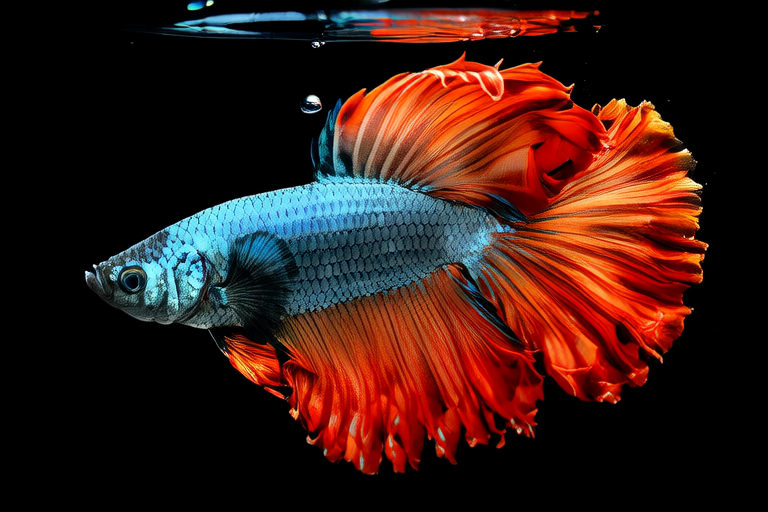Unusual and Lesser-Known Facts About Betta Fish
Betta fish, also known as Siamese fighting fish, have long been popular among aquarium enthusiasts. However, there are many unusual and lesser-known facts about these vibrant creatures that go beyond their striking appearance. This article delves into the behaviors, care requirements, and debunked myths surrounding betta fish, providing insights into their natural habitat, unique respiratory systems, and the truth behind their aggressive reputation. Additionally, it offers tips for creating an enriching environment and suitable tank mates, emphasizing the importance of understanding bettas beyond common misconceptions to ensure their well-being as pets.
Natural Habitat
Betta fish originate from the rice paddies, slow-moving streams, and canals of Thailand, Cambodia, Vietnam, and Malaysia. These environments are often characterized by warm temperatures, low oxygen levels, and dense vegetation. In their natural habitat, bettas thrive in shallow waters where they can easily access the surface for gulping air. This adaptation is crucial because the stagnant water in their native environments often has lower oxygen levels than typical aquarium setups. Understanding this aspect of their natural habitat is essential for replicating suitable living conditions in captivity.
Unique Respiratory Systems
Betta fish possess a specialized organ called the labyrinth organ, which allows them to breathe air directly from the surface. This organ enables bettas to survive in low-oxygen environments by supplementing their gill breathing with atmospheric oxygen. The labyrinth organ consists of many folded structures that increase the surface area for gas exchange, allowing the fish to extract oxygen from the air. While this adaptation is beneficial in their natural habitat, it also means that bettas require access to the water’s surface in captivity to maintain optimal health.
Aggressive Reputation: Fact or Fiction?
The aggressive reputation of betta fish is often exaggerated. While male bettas can be territorial and may display aggressive behavior towards each other, they are generally peaceful when kept alone or with compatible tank mates. Female bettas, on the other hand, tend to be less aggressive and can coexist peacefully in groups. It’s important to note that aggression in bettas is influenced by factors such as overcrowding, poor water quality, and inadequate hiding spots. Providing a spacious tank with plenty of plants and decorations can help reduce stress and minimize aggressive behavior.
Behavioral Traits
Betta fish exhibit several fascinating behaviors that make them unique pets. They are known for their elaborate displays of fins, especially during courtship rituals. Male bettas will spread their fins wide and perform intricate movements to attract females. Another interesting behavior is their tendency to “mouth” objects, including the substrate and tank decorations. This behavior is believed to be a way for bettas to explore their environment and potentially remove parasites. Understanding these behaviors can help owners provide appropriate enrichment for their pets.
Care Requirements
Proper care is essential for maintaining the health and well-being of betta fish. A minimum tank size of 2.5 gallons (10 liters) is recommended to provide ample swimming space and prevent overcrowding. The water temperature should be maintained between 78°F and 82°F (25°C to 28°C), as bettas are tropical fish and thrive in warm environments. Regular water changes, typically 20-30% weekly, are necessary to keep the water clean and free from harmful toxins. Additionally, providing a stable pH level between 6.5 and 7.5 and ensuring good water circulation can further enhance their living conditions.
Myths Debunked
One common myth about betta fish is that they can live happily in small containers, such as vases or bowls. However, this is far from true. Betta fish require adequate space and proper filtration to thrive. Another misconception is that bettas need to be kept in isolation due to their aggressive nature. While males may be territorial, they can coexist peacefully with compatible tank mates if given sufficient space and hiding spots. Finally, the belief that bettas don’t need a heater is incorrect, as they are tropical fish and benefit from consistent water temperatures.
Enriching Environment
To create an enriching environment for betta fish, it’s essential to provide a variety of hiding spots, such as caves, plants, and driftwood. These items not only serve as shelter but also stimulate exploration and play. Floating plants, like Java moss and Amazon frogbit, can mimic the dense vegetation found in their natural habitats and offer additional hiding places. Additionally, incorporating interactive toys, such as sinking treats or floating balls, can encourage physical activity and mental stimulation. Ensuring a well-planted and decorated tank can significantly enhance the overall quality of life for bettas.
Suitable Tank Mates
Selecting appropriate tank mates for betta fish is crucial for maintaining harmony within the aquarium. Some compatible options include small, non-aggressive species such as harlequin rasboras, ember tetras, and kuhli loaches. These fish tend to stay in the middle or bottom of the tank, leaving bettas undisturbed at the top. Avoid keeping bettas with highly active or aggressive species, as well as those that resemble bettas in shape or color, as this may trigger territorial behavior. Researching potential tank mates and considering their compatibility is key to fostering a peaceful community tank.
Conclusion
Betta fish are captivating creatures with unique behaviors, care requirements, and often misunderstood reputations. By understanding their natural habitat, respiratory systems, and debunking common myths, owners can provide a nurturing environment that promotes their pets’ health and happiness. Creating an enriching environment with suitable tank mates and adhering to proper care guidelines ensures that bettas thrive as beloved companions. Embracing the complexities of these beautiful fish goes beyond aesthetics, offering a rewarding experience for both novice and experienced aquarium enthusiasts alike.
